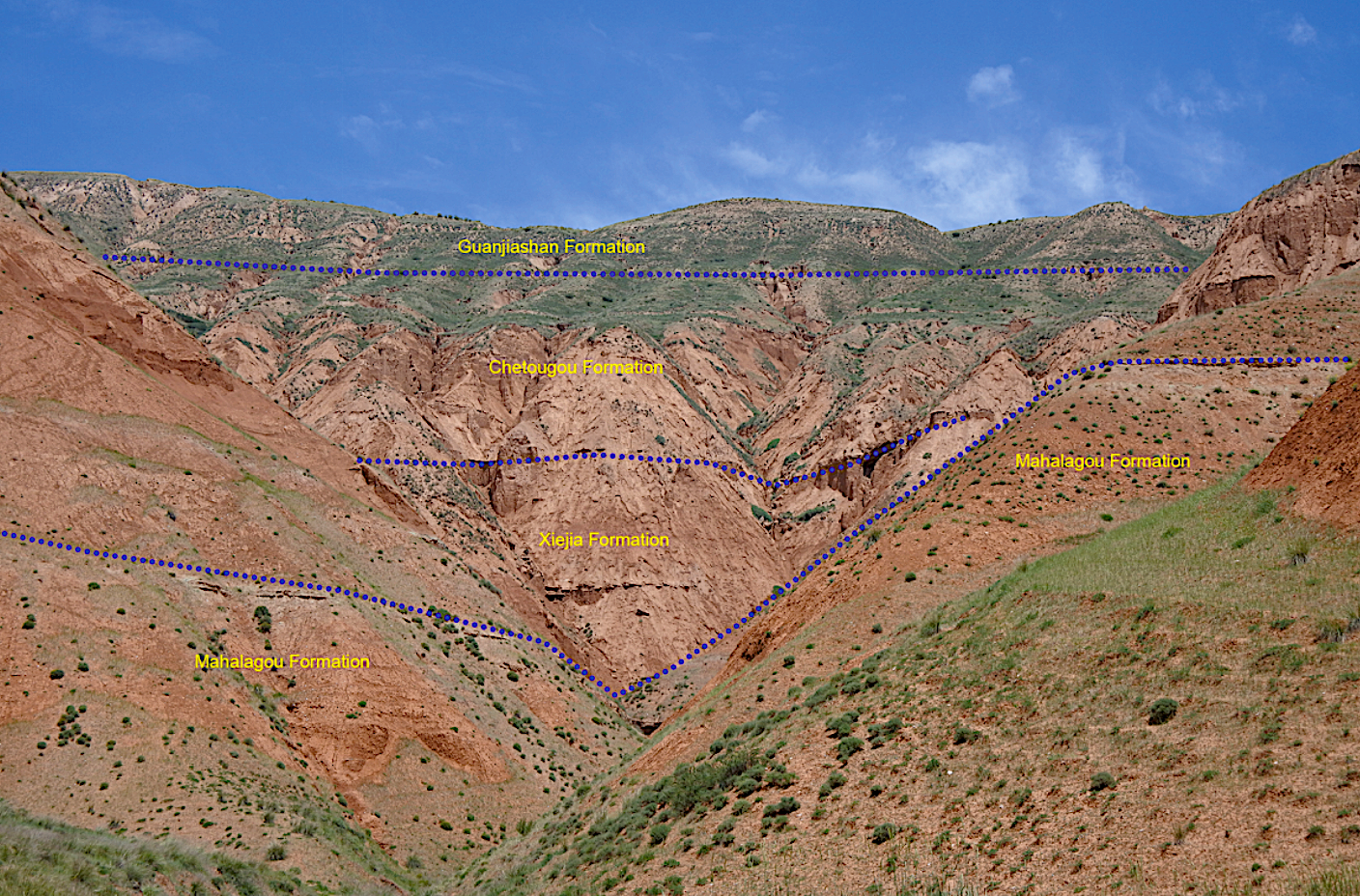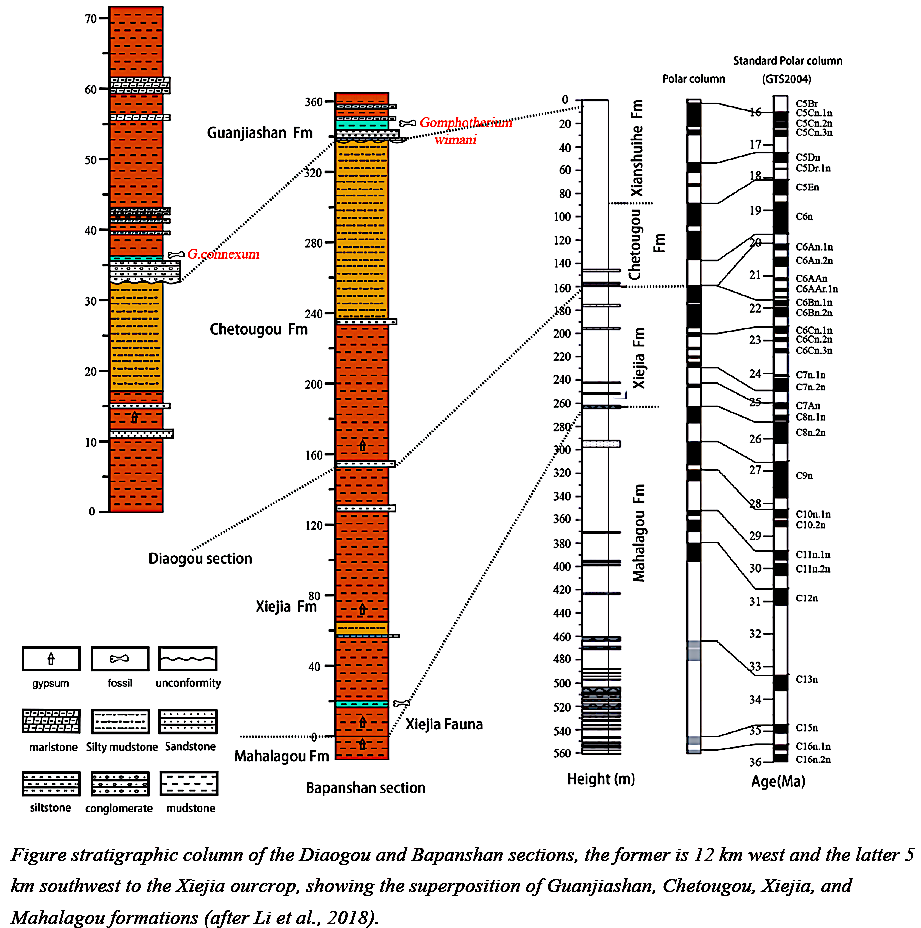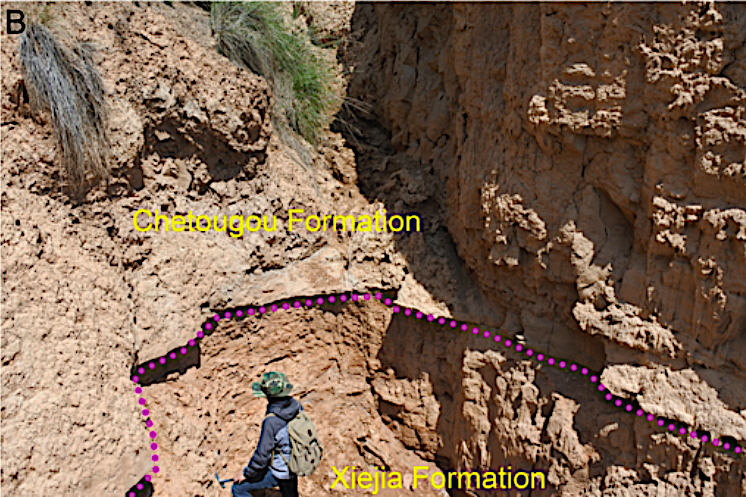Xiejia Fm
Type Locality and Naming
Lanzhou-Xining region. The type section is located 1 km west of Xiejiahe Village, Tianjiazhai Township, Huangzhoung District, Xining City. It is situated southeast of the Xining City with a straight-line distance of 14 km. Geographical coordinates: 36°31′35.96″N—101°51′50.43″E(GPS). It was named by the Petroleum Reconnaissance Party, Qinghai Bureau of Geology in 1978.
[Figure: Photos of the Xiejia Section. Showing the superposition of Guanjiashan Fm (Xiadongshan Fm), Chetougou Fm, Xiejia Fm, and Mahalagou Fm.]
Lithology and Thickness
Lower member, mainly brownish yellow and reddish brown, massive and thick-bedded, silty mudstone, the base of which is intercalated with sandy conglomerate and muddy gypsum rock and the top of which is very thick-bedded sandy conglomerate; Upper member, brownish yellow, massive, silt-bearing calcareous mudstone. The lithology is uniform and the thickness generally ranges from 75 to 195 m.
[Figure: stratigraphic section of the Xiejiahe Section (after Li et al., 1980).
Relationships and Distribution
Lower contact
It has a conformable contact with the underlying Mahalagou Fm (Qinghai subbasin) or Yehucheng Fm (Gansu subbasins).
Regional extent
The Xiejia Formation is distributed in the Xining basin.
GeoJSON
Fossils
Angiosperm: Piceaepollenites-Ulmipollenites assemblage in the lower member, with Ulmipollenites predominating, and the Potamogeton-Quercoidites assemblage in the upper member, with Potamogeton being dominant. Mammals: Primate: Sinopalaeoceros sp.; Lagomorpha: Sinolagomys pachygnathus; Rodentia: Atlantoxerus sp., Eucricetodon youngi, Parasminthus xiningensis, Tataromys suni, Tachyoryctoides kokonorensis; Perissodactyla: Diacertherium sp.
The Xiejia Formation is of importance for the naming of the Xiejia Fauna, and subsequently the Xiejia Stage, the first stage of the Chinese continental Neogene. The Xiejia fauna mainly contains small mammals. Their genera and species are mostly those inherited from the late Oligocene Taben Buluk fauna of China but more advanced in morphology than the late Oligocene fauna, and their features are similar to the so-called “dwarfed and specialized Oligocene fauna” found in the Ajitanian Stage of Europe.
Age
Depositional setting
Saline lakeshore to fresh-water lakeshore facies.
Additional Information



